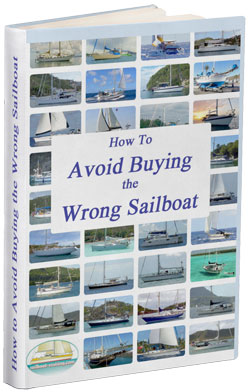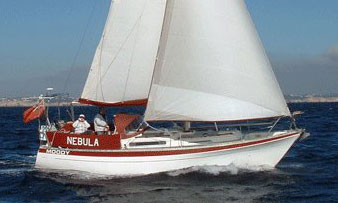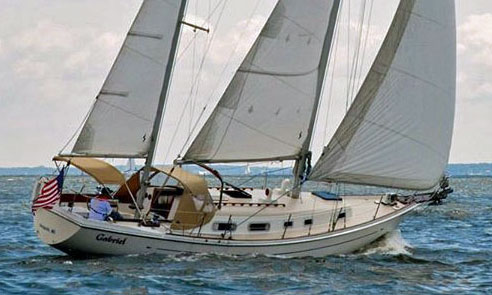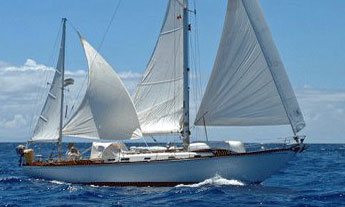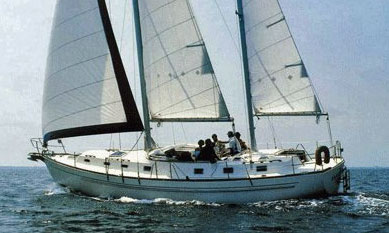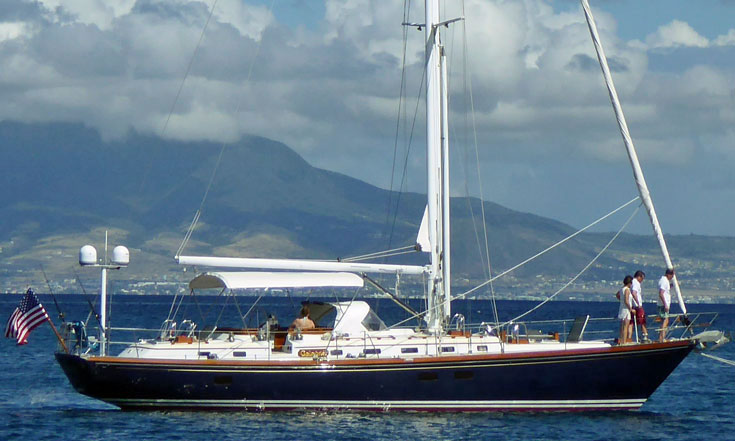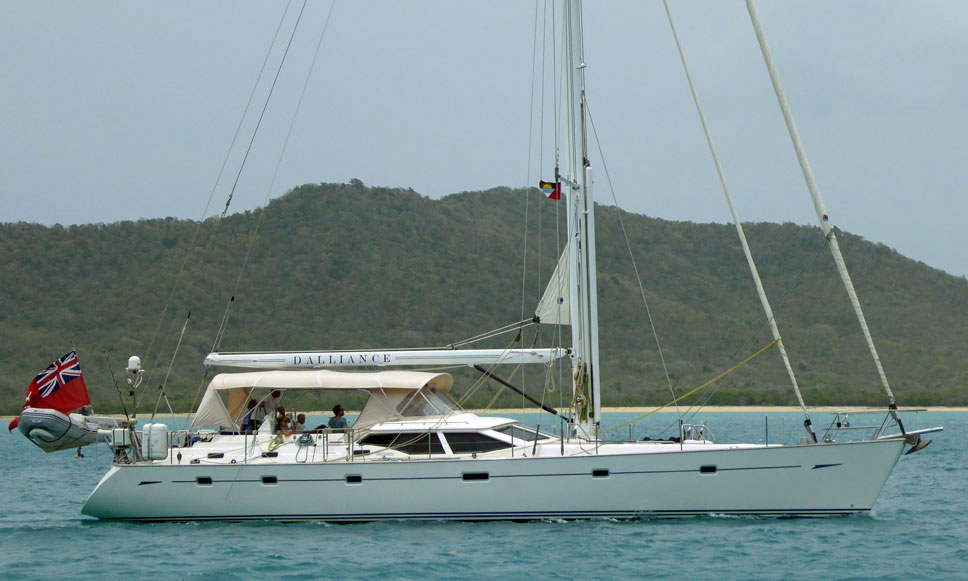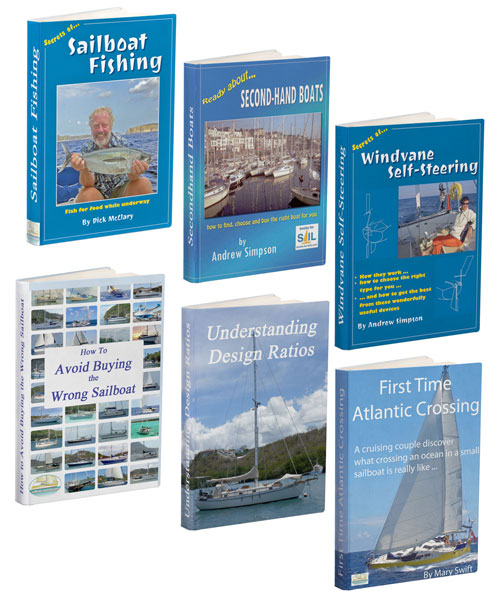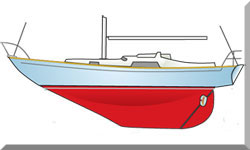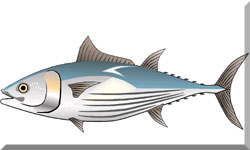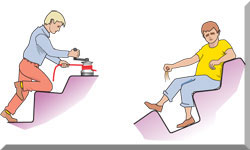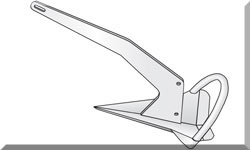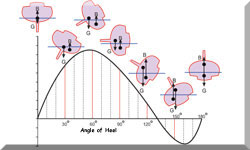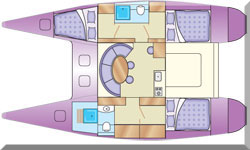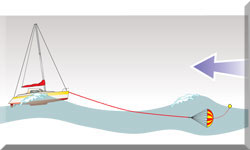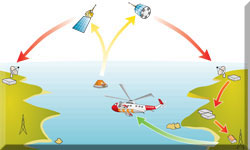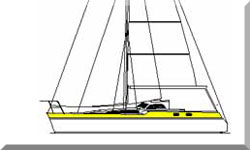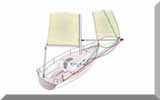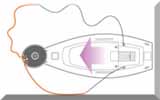- Home
- Cruiser Yachts under 30'
- Albin Vega
The Albin Vega Sailboat
The Albin Vega is a classic cruising sailboat that was designed by Swedish designer Per Brohäll and built in Sweden by Albin Marine. The boat is known for its seaworthiness, performance and affordability, and has been sailed around the world by many adventurous sailors.
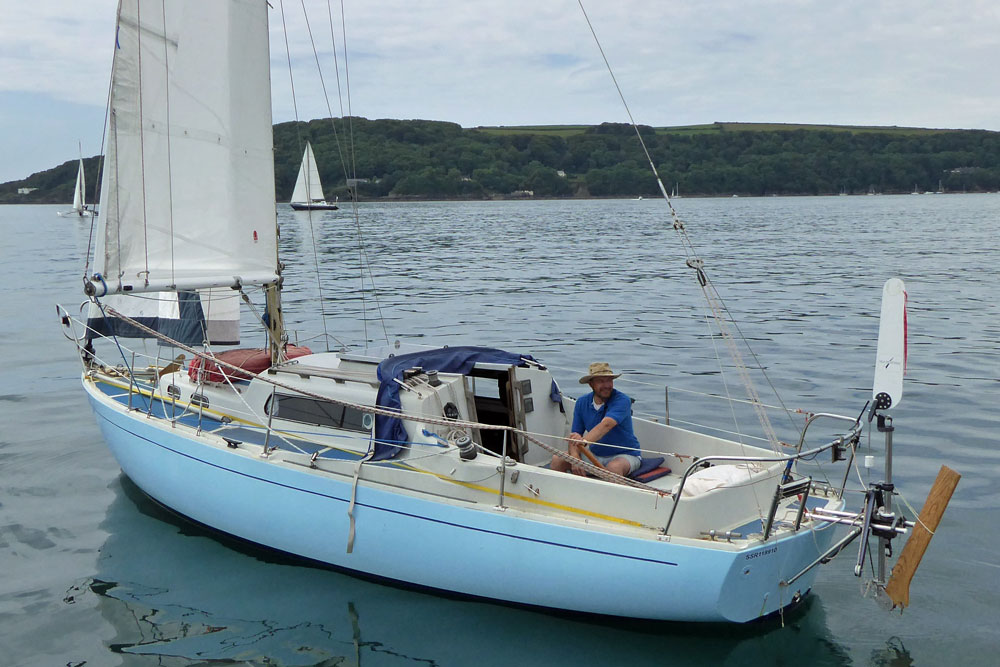 That windvane self-steering gear tells us that the skipper of this Albin Vega 27 has got a serious voyage in mind!
That windvane self-steering gear tells us that the skipper of this Albin Vega 27 has got a serious voyage in mind!Published Specification for the Albin Vega 27
Keel & Rudder Configuration: Long keel and a keel-hung rudder
Hull Material: Fibreglass (GRP)
Length Overall*:
8.25 metres (27'1")
Waterline Length*: 6.6 metres (21'8")
Beam*: 2.46 metres (8'1")
Draft*: 1.17 metres (3'10")
Rig Type: masthead sloop
Displacement*: 2,300 kg (5,070 lbs)
Ballast*: 910 kg (2,000 lbs)
Sail Area*: 29.7 m² (320 ft²)
Water Tank Capacity: 50 litres (13 US gallons)
Fuel Tank Capacity: 25 litres (6.6 US gallons)
Hull Speed: 6.1 knots
Designer: Per Brohäll
Builder: Albin Marine
Year First Built: 1965
Year Last Built: 1979
Number Built: 3,400
* Used to derive the design ratios referred to later in this article - here's how they're calculated...
Options & Alternatives
No significant alternative versions of the Albin Vega 27 sailboat became available during its production run that substantially altered its core design or specifications. The design remained largely consistent throughout its manufacturing period.
Sail Areas & Rig Dimensions
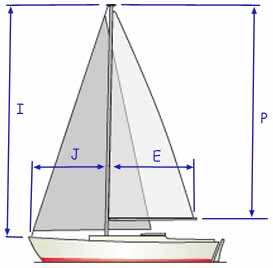 Sail Areas & Rig Dimensions
Sail Areas & Rig DimensionsSail Areas
- Mainsail Area: 12.5 m² (135 ft²)
- 100% Foretriangle Area: 17.2 m² (185 ft²)
- Total Sail Area: 29.7 m2 (320 ft2)
Rig Dimensions
- I (foretriangle height): 9.45 metres (31'0")
- J (foretriangle base): 3.66 metres (12'0")
- P (main luff): 8.53 metres (28'0")
- E (main foot): 2.90 metres (9'5")
Published Design Ratios
The Key Performance Indicators (KPIs)
The key design ratios for the Albin Vega 27 are:
- Sail Area/Displacement (SA/D): 16.5
- Displacement/Length (D/L): 290
- Ballast/Displacement Ratio (B/D): 40%
- Capsize Screening Formula (CSF): 2.0
- Motion Comfort Ratio (MCR): 21.0
Theoretical Sailing Characteristics
The design ratios offer a theoretical insight into the Albin Vega 27's sailing characteristics:
- Sail Area/Displacement Ratio (SA/D) - 16.5: An SA/D ratio of 16.5 suggests the Albin Vega 27 is a moderately powered sailboat. It's not a light, high-performance racer, nor is it an underpowered cruiser. This ratio indicates it should perform reasonably well in light to moderate winds and will likely need to be reefed in stronger winds to maintain control and comfort. It's a good balance for general cruising.
- Displacement/Length Ratio (D/L) - 290: A D/L ratio of 290 classifies the Albin Vega 27 as a medium-heavy displacement cruiser. This implies it will be seakindly, providing a comfortable motion in a seaway due to its momentum and ability to cut through waves rather than being tossed around. While it won't be exceptionally fast in flat water, its heavier displacement contributes to good directional stability and a forgiving ride, making it suitable for offshore passages.
- Ballast/Displacement Ratio - 0.40: The ballast-to-displacement ratio of 0.40 (or 40%) for the Albin Vega 27 is considered a respectable figure for a cruising sailboat. This indicates that a significant portion of the boat's total weight is dedicated to ballast, primarily located low in the keel. A higher ballast ratio generally correlates with greater initial stability, making the boat stiffer and more resistant to heeling under sail or in choppy seas. This contributes positively to the boat's seakindliness and overall safety, particularly in stronger winds or adverse conditions.
- Capsize Screening Formula (CSF) - 2.0: A CSF value of 2.0 indicates the Albin Vega 27 has a good resistance to capsize. Generally, a CSF of 2.0 or less suggests a boat is more stable and less prone to capsize in rough conditions. This reinforces its suitability for offshore and coastal cruising, offering a higher degree of safety and stability.
- Motion Comfort Ratio (MCR) - 21.0: An MCR of 21.0 suggests the Albin Vega 27 provides a moderately comfortable motion in choppy conditions. Boats with higher MCR values tend to have a slower, more comfortable motion. While not extremely high (which would indicate a very heavy, slow-moving vessel), an MCR of 21 is typical for a boat of its size and displacement, offering a reasonable level of comfort for extended periods at sea.
In summary, based on its design ratios, the Albin Vega 27 is theoretically a stable, seakindly, and reasonably capable cruising sailboat. It is well-suited for coastal and offshore cruising, prioritising comfort and safety over outright speed. Its moderate sail area relative to its displacement suggests a balanced performance across various wind conditions, with good stability providing confidence in challenging seas.
But the Design Ratios are Not the Whole Story...
While design ratios offer valuable theoretical insights, they have several significant limitations in fully defining a sailboat's actual sailing characteristics:
- They are only theoretical: Design ratios are mathematical calculations based on a few key dimensions. They don't account for the complex hydrodynamic and aerodynamic forces at play when a boat is actually sailing.
- Oversimplification of Hull Form: Ratios like D/L don't capture the nuances of a hull's shape. Two boats with the same D/L might have vastly different underwater profiles (e.g., fin keel vs. full keel), leading to different wetted surface areas, lateral resistance, and performance characteristics (e.g., pointing ability, manoeuvrability).
- Sail Plan Efficiency: The SA/D ratio considers total sail area but doesn't account for the efficiency of the sail plan, sail shape, or the quality of the sails themselves. A well-designed, modern sail plan can be more efficient with less area than an older, less efficient one. It also doesn't consider the aspect ratio of the sails.
- Keel and Rudder Design: Ratios don't detail the specific design of the keel (e.g., aspect ratio, chord length) or rudder. These elements significantly impact a boat's ability to point, track, and manoeuvre. A long keel, like that on the Vega, provides good directional stability but can make the boat less nimble than one with a fin keel and spade rudder.
- Centre of Effort and Lateral Resistance: The precise location of the centre of effort of the sails relative to the centre of lateral resistance of the hull and keel is crucial for balance and helm feel. Design ratios do not provide this information.
- Weight Distribution and Ballast Location: While ballast amount is included, the vertical and longitudinal distribution of that ballast (e.g., deep keel bulb vs. internal ballast) significantly affects stability, pitching moment, and motion comfort, which isn't fully captured by the CSF or MCR.
- Construction and Rigging Quality: The stiffness of the hull, the quality of the rigging, and the overall build quality can greatly influence how a boat performs and feels in different conditions. These factors are entirely absent from design ratio calculations.
- Crew Skill and Experience: Ultimately, how a boat sails is heavily influenced by the skill of the crew in trimming sails, steering, and adapting to conditions. No ratio can account for human factors.
- Environmental Factors: Wind strength, wave height and period, currents, and sea state all interact with a boat's design in complex ways that ratios cannot predict.
- Subjective Feel and Ergonomics: Ratios don't tell you anything about the "feel" of the helm, the ease of handling, the comfort of the cockpit, or the livability of the interior, all of which are critical to the sailing experience.
In essence, design ratios provide a useful starting point for comparison and broad categorisation, but they are not a substitute for detailed design analysis, real-world performance data, or actual sailing experience. They offer a simplified snapshot rather than a comprehensive picture of a sailboat's characteristics.
Sources & References
- SailboatData.com: ALBIN VEGA 27 [https://sailboatdata.com/sailboat/vega-27-albin]
- Albin Vega Association: About the Vega [https://www.albinvega.com/about-the-vega/]
- Blue Water Boats: Albin Vega 27 [https://www.bluewaterboats.org/albin-vega-27/]
- Yachting Monthly: Albin Vega 27 [https://www.yachtingmonthly.com/reviews/used-boat-reviews/albin-vega-27-review-a-good-choice-for-a-first-boat-or-those-on-a-budget]
More Specs & Key Performance Indicators for Popular Cruising Boats
Recent Articles
-
Passoa 47 Sailboat Review: Comprehensive Specs & Performance Analysis
Jan 04, 26 04:57 AM
Discover the Passoa 47, a legendary aluminium blue water cruiser by Garcia. Explore technical specifications, design ratios, and why its lifting keel is a game-changer for offshore sailors. -
Sailboat Wheel Steering Maintenance & Inspection Checklist
Dec 30, 25 02:32 PM
Keep your vessel’s helm responsive and reliable with our expert maintenance checklist. Master cable tensioning and system inspections to avoid mid-passage failures. -
Modern Boat Electronics and the Latest Marine Instruments
Dec 20, 25 05:27 PM
Should sailboat instruments be linked to the latest boat electronics as a fully integrated system, or is it best to leave them as independent units?
